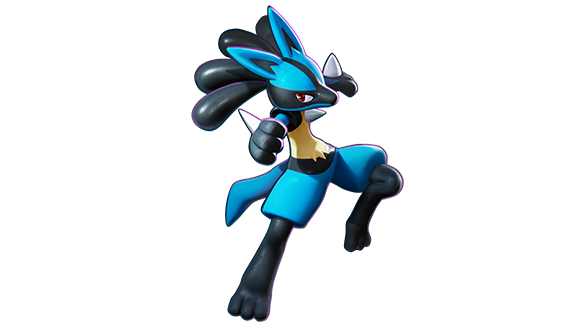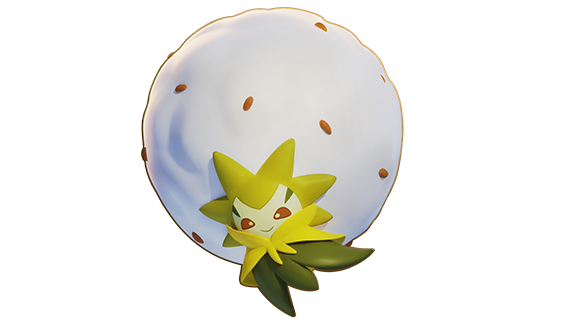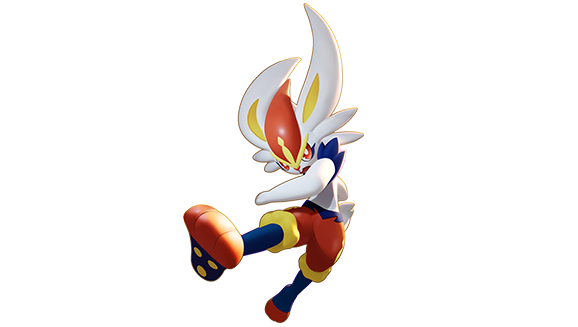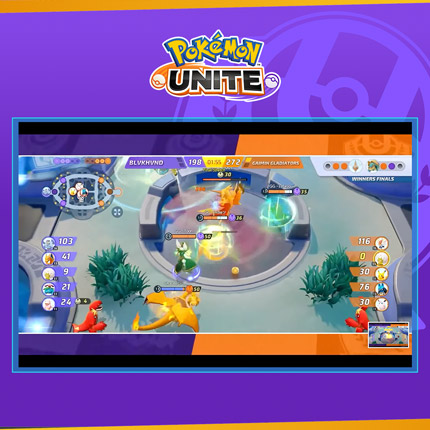Hear how one of the top Pokémon UNITE teams prepared for their biggest matches.
By George “Goof” Gebhardt, Contributing Writer
The February Pokémon UNITE circuit finals have concluded, giving fans of the
competitive scene their first official look at which team reigns supreme in
each region. I am fortunate to be on one of the top teams in North America, the
Gaimin Gladiators. We won the first event of the Pokémon UNITE Championship Series—the
February Finals—without dropping a single game, and we look forward to
continuing our success right up to the World Championships. Our team has put in
a lot of hard work to get to the level we’re at, and a lot of aspiring players probably
want to know more about what has led us to our success. In this article, I will
explain how we formed our team, our preparation for this tournament, and our
dominant run through the event.
First, let’s look
at some of the other top teams from when the Pokémon UNITE Championship Series
kicked off. The European February Grand Finals were action-packed, with Yerman
Burger Flippers facing off against Random Gaming. Both teams brought their best
scoring-focused compositions and battled it out in chaotic style. Random Gaming
surprised their opponents with a niche Crustle pick that tilted this no-defense,
pure-scoring battle in their favor. With this win, Random Gaming, after having
fallen to the lower bracket earlier in the event, claimed victory in the Grand
Finals.
As
for Oceania, the favorite to win—Ground Zero Gaming—decided to play a more traditional style. With
some brilliant adjustments to the standard western metagame, this team
unleashed Talonflame and a solo top path Charizard. Their strategy paid off,
securing them a 2–1 victory in the Grand Finals. In the following weeks, we saw
the top teams of other regions experimenting with this Charizard strategy.
Needless to say, there’s a lot of talent and a lot of evolving strategy
everywhere that Pokémon UNITE is being played.
OK, let’s take a look at the work Gaimin Gladiators put into their winning team strategy!

A good place to start is the beginning. Leading up to the release of Pokémon
UNITE, my friends and I were all really excited to jump in. We have competitive
backgrounds in similar games, and many of us really just love Pokémon. Before
we knew what the metagame would be, and before we knew if there would be a
competitive scene, we had a rough idea of who would be playing what. Here is
what each teammate brought to the table with regard to both talent and attitude.
With Indie’s long
history of playing the healer role across similar games, we knew Indie would be
the perfect fit playing Supporter Pokémon. The thing about Indie is that he’s
perfectly content just to float around on Eldegoss, saving us with Cotton
Guard, but he’s also skilled enough to play any Pokémon or role. This is a rare
combo in competitive games. He brings a positive attitude, and he’s always
willing to take responsibility for his mistakes.
Zugrug has a
professional background across multiple other competitive titles—and a penchant
for the “tank” role. Zugrug was a shoo-in for the Defender spot on our
yet-to-be Pokémon UNITE team. He is nearly always calm under pressure and has
experience on the big stage playing in front of a crowd (for if and when the
time comes at the World Championships).
Our plan for
Lutano going into Pokémon UNITE was simple. We would figure out which Pokémon
was the hardest and most mechanically demanding, then stick Lutano on it. This
guy has been bringing it to our opponents on Lucario since the release of the
game, and we wouldn’t have it any other way.
Toon was an easy
pick for our Pokémon UNITE team as our longtime friend and consistent
overperformer in any game our group has played. Toonslim is really having his
time to shine in Pokémon UNITE and is arguably the best central area player in
the world.
This is me. I
play the bottom path attacker for my team. When Pokémon UNITE released, I
really wanted to play as Pikachu. Recently, my dream came true, and we won the February
Finals with me piloting everyone’s favorite Electric-type Mouse Pokémon. I
won’t talk up my gaming history here besides to say that it allowed me to make
all the right friends for this journey.

Despite
all our preparation before the release of the game, the metagame of Pokémon
UNITE was hard to predict months in advance. I’ll quickly break down the
current “1-1-3” or “western” metagame as it pertains to the roles on my team
and areas of the map.
The top path is
typically home to a 1-on-1 battle, with each team sending one Pokémon that
excels at this duel for control. Lucario has been the prevailing choice since
the release of the game, but we’ve seen Tsareena, Garchomp, Machamp, and
recently, as mentioned earlier, Charizard from our Oceania February champions.

The central area pick
for each team is typically one Pokémon that benefits significantly from a large
Exp. Points lead. This player must help their teammates on the top or bottom
paths at two key early points in battle: 8:50 and 7:20, when the Vespiquen
appear. It’s important that the chosen Pokémon is powerful at these times so it
can begin building a lead.
The bottom path is
an all-out 3-on-3 battle. There’s usually a healing Supporter Pokémon, which
has predominantly been Eldegoss. Joining it is a Ranged Attacker, as well as a
Defender or a bulky Supporter to secure the last hits on wild Pokémon.
This leaves the roles in the current metagame as follows:
-
Top path solo player
-
Central area “carry”
-
Bottom path “tank”
-
Bottom path “attacker”
-
Bottom path “healer”
Prior
to the Play! Pokémon Championship Series kicking off, my team had won nearly
every major western tournament, but admittedly, our morale was starting to fade.
Then, the details about the official Pokémon UNITE circuit and a live event at the
World Championships were revealed, including a $1 million USD prize pool. That
brought us back. Our motivation rebounded to an all-time high, but with fans in
every region declaring us the best team in the world right out of the gate, the
bar was set high. We could not afford to lose the first official event.

Even
though we were excited, we weren’t playing our best around this time. But despite
the weight of the moment, I don’t think anyone was really nervous. We decided
the ranked ladder wasn’t sufficient practice, so we arranged scrimmages with
other top teams. The best teams from North America and neighboring regions were
invited to participate. We stopped livestreaming our practice, and for around
four hours per day, we played Pokémon UNITE as a team against the best
opponents who were willing.
We were clearly
improving, and after a week or two, we were once again at our best. We
developed new macro tactics, and because we weren’t communicating all our
strategies when we did stream matches, each tactic remained effective for longer.
By the time our opponents figured out one thing we were doing, we had three
more new ideas to throw them off balance.
We could see the
draw competitive Pokémon UNITE had firsthand as the viewer numbers just to
watch us practice were higher each day. Again, this came with feelings of
pressure to perform, but we were practicing hard. I knew we wouldn’t let our
fans down.
Regardless of our
level of confidence, there was one thing we had to make sure was optimal going
into the event, and that was picking the right Pokémon for the job. We knew we
could change battle items and held items on a whim to adjust to our opponents,
but if we practiced with the wrong Pokémon, it wouldn’t be such an easy fix. We
decided pretty early on in February that, given the time frame, we had time to
prepare a main composition and maybe one backup composition in case things went
south.
There was some debate,
but as a team, I think we all agreed on some fundamental ideas. First, we
wanted something stable and well-rounded. We would prefer to have
a few slightly unfavorable matchups we could overcome with skill rather than
have any nearly unwinnable matchups. Additionally, for our main composition, we
needed something flexible in terms of our game plan. Having the tools to
win a game in which we lost the first Drednaw was significantly more important
to us than being slightly more favored when we did win it. It was also
important that we had the tools to win late-game team fights, as well as the
tools to quickly complete the map objectives if the situation called for it.
Looking back at this tournament, I wouldn’t change a thing from what we settled
on.

Here’s the team we ended up using in the February Finals.
Indie
was on his tried-and-true Eldegoss for this tournament. Cotton Guard is too
strong to not have on your team. And with its powerful Unite Move, this Pokémon
is incredibly strong in the constant 3-on-3 skirmishes on the bottom path. Eldegoss’s
ranged basic attacks and the sustain provided by its moves make it indispensable.
Pokémon:
Eldegoss
Moves:
Cotton Guard + Leaf Tornado
Battle Item:
X Speed
Held Items:
Buddy Barrier / Muscle Band / Exp. Share
Pikachu was an
easy choice for me. Pikachu provides early-game dominance with two strong early-game
moves and extremely long-ranged Muscle Band basic attacks. Pikachu requires
very few Exp. Points to be useful, which allowed Toonslim and Lutano to be more
greedy. Additionally, Pikachu’s fast-charging Unite Move provides lots of macro
options, especially when Rotom first appears three minutes into the match.
Pokémon:
Pikachu
Moves:
Thunder + Thunderbolt
Battle Item:
Eject Button
Held Items:
Buddy Barrier / Muscle Band / Focus Band

For
our bottom path “tank,” we chose Wigglytuff. Wigglytuff has a strong early game,
with Sing unlocking at Lv. 4. Sing is great for setting up for Pikachu. At Lv. 8,
Wigglytuff unlocks its extremely powerful and flexible Unite Move, which is strong
both offensively and defensively. This is absolutely massive in games in which you
lose the first Drednaw and would otherwise struggle to get Slowbro’s or Snorlax’s
Unite Move (which unlock at Lv. 9) for the second one.
Pokémon:
Wigglytuff
Moves:
Sing + Dazzling Gleam
Battle Item:
Eject Button
Held Items:
Buddy Barrier / Focus Band / Score Shield
The central area
is a tricky one for deciding which Pokémon to play as. You have to weigh the Pokémon’s
strength against the first and second Vespiquen, its clear speed, its potential
for surprise attacks on the top and bottom paths, and so much more. There are a
lot of issues to deal with, but there are just as many attractive, extremely
powerful options. For our needs and for consistency’s sake, we chose Cinderace.
Cinderace is relatively strong throughout the match, has a somewhat stable,
predictable performance in fights, and can reliably complete map objectives when
the time is right without taking damage. Cinderace’s long range also means the
strongest Pokémon on your team doesn’t always have to be in harm’s way to deal
damage. This is something Speedsters like Talonflame lack.
Pokémon:
Cinderace
Moves:
Blaze Kick + Flame Charge
Battle Item:
Eject Button
Held Items:
Buddy Barrier / Scope Lens / Muscle Band
For Lutano, we
decided on the tried and tested Lucario. Lucario has a strong early game on the
top path and is no slouch compared to the alternatives in late-game team
fights. Lutano saw a bit of a return to dominance on Lucario with the rise of the
Close Combat build. This build allows us to secure map objectives with Power-Up
Punch, something we would otherwise be sorely missing. Leading into this event,
we were using Pikachu’s long-range zoning to make our opponents change their
route into the Zapdos area. When they did, we would then pull and secure Zapdos
while they repositioned. Lucario’s damage with Close Combat and secures with Power-Up
Punch made this possible.
Pokémon:
Lucario
Moves:
Power-Up Punch + Close Combat
Battle Item:
Slow Smoke
Held Items:
Muscle Band / Razor Claw / Attack Weight
For
our backup composition, we prepared something that would cover any of our main
composition’s potential weaknesses, as well as perhaps catch our opponents off
guard. We didn’t change everything, but it’s surprising how a couple
different Pokémon can be a game changer. This one was much more straightforward:
a powerful late-game team-fight setup geared toward building an impossible-to-take-down
Petal Dance + Giga Drain Venusaur.
It relied on Blissey in the tank role, providing twice as much support for a central
area Venusaur and for running our opponents over. We thought this was a strong
counter for Talonflame and other central area Speedster compositions, which
relied on taking Toonslim’s Cinderace out of the fight early on with burst
damage. Not only is Venusaur a pain to knock out, but it would be backed up by
Zugrug on Blissey.
In this composition, Indie remained on Eldegoss. Not much new to say here. Eldegoss does what it does very well.

Pokémon:
Eldegoss
Moves:
Cotton Guard + Leaf Tornado
Battle Item:
X Speed
Held Items:
Buddy Barrier / Muscle Band / Exp. Share
Again, Pikachu
remained in the composition. This Pokémon felt necessary for securing the early
game, and with this largely Venusaur-focused team, it was even more important
that our bottom path attacker be relevant without too many Exp. Points.
Pokémon:
Pikachu
Moves:
Thunder + Thunderbolt
Battle Item:
Eject Button
Held Items:
Buddy Barrier / Muscle Band / Focus Band
We swapped Zugrug
to Blissey on our backup team. Blissey’s role on the team was to stop pesky
burst damagers or crowd-control effects from taking out our Lucario or
Venusaur. Then, once the fight was stabilized, we would run our opponents over
with two Supporters and a high-level Venusaur.
Pokémon:
Blissey
Moves:
Safeguard + Helping Hand
Battle Item:
Slow Smoke
Held Items:
Buddy Barrier / Focus Band / Score Shield
As you can tell
by now, the crux of this composition is the central area Venusaur. Paired with
Blissey and Eldegoss, Venusaur is nearly impossible to take down when it has a
lead. This is amplified when our opponents would forgo a traditional sustained-damage-dealing
central area Pokémon in favor of a burst-damage Speedster. The game would then
simply be about surviving the initial engagement, and with Blissey, that’s easy
work.
Pokémon:
Venusaur
Moves:
Giga Drain + Petal Dance
Battle Item:
Full Heal
Held Items:
Buddy Barrier / Focus Band / Muscle Band
Here we stuck
with Lucario. Lutano has been dominating with it, and there are definitely some
windows for an Extreme Speed switch-up here.
Pokémon:
Lucario
Moves:
Power-Up Punch + Close Combat
Battle Item:
Slow Smoke
Held Items:
Muscle Band / Razor Claw / Attack Weight
Luckily, we
didn’t have to switch from our main composition, but I’ve included this backup
team composition to give an idea of what went into our preparation. You may not
always need a backup team, but when you do, you’ll be grateful you had one.

To
play well and stay mentally focused, I believe you should feel good physically,
too! Before events, I like to wake up early, hit the gym, get breakfast, and
relax a bit before warming up with some practice matches. I find that a good
night’s rest and a morning routine can put you in a consistent mindset to
perform well. You could argue that this wasn’t the most challenging set of
matches we’ve played, but I think our success is mostly due to us preparing the
right way. We’re also excited to have fans that watch the matches and push us
to be the best people and players we can be.
The Gaimin Gladiators and so many other teams are so
excited for the rest of the Pokémon UNITE Championship Series. We’re truly
wishing the other teams luck and doing our best for our competitive scene and Pokémon
UNITE as a whole.
About the Writer

George “Goof” Gebhardt
Goof is the captain of a dominant team in the Pokémon UNITE competitive scene. He has been playing MOBA-style games for 15 years. Pokémon games, including the TCG, have always been a passion of his. You can find him on Twitter at @goof_gg.

Source: Pokemon

